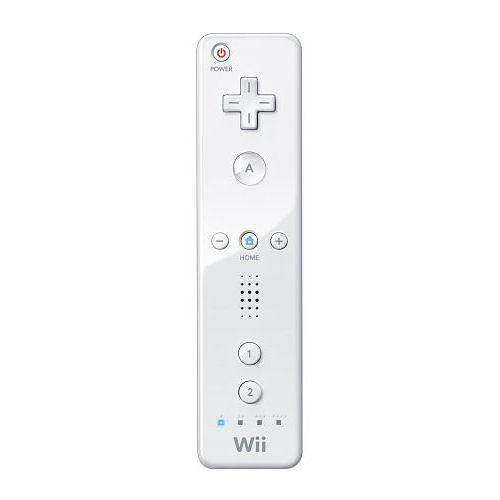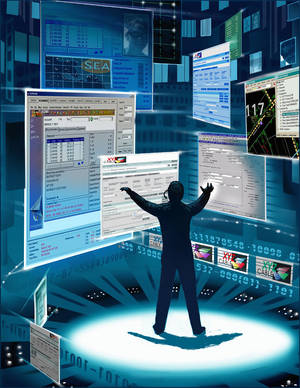Gestural Interfaces
I first saw gestural interfaces in university labs and demonstrated at conferences about twenty years ago. Back then, the user would have to wear what was called a "data glove" in order for the computer to sense the actions of the user. Then about four years ago Nintendo came out with the Wii which was the first commercial product to truly exploit a gestural interface. While you didn't have to have a data glove, you did have to hold onto a remote typically called a Wiimote. It was impressive at the time to experience a game system responding to the movement of the Wiimote you were holding. It was an impressive augmentation of the type of interactions users could have with technology. Users could play a game of bowling and other games which involved fairly course movements. Wii Fitness was also popular as it perfectly matched the characteristics of the interaction. Of course, hardcore games weren't very effective or successful on the platform.
glove, you did have to hold onto a remote typically called a Wiimote. It was impressive at the time to experience a game system responding to the movement of the Wiimote you were holding. It was an impressive augmentation of the type of interactions users could have with technology. Users could play a game of bowling and other games which involved fairly course movements. Wii Fitness was also popular as it perfectly matched the characteristics of the interaction. Of course, hardcore games weren't very effective or successful on the platform.
This Christmas season witnessed the introduction of two advances in gestural interfaces with Sony's Move and Microsoft's Kinect. Sony improved upon the Nintendo's Wii with being able to detect movement and positioning in all dimensions. However, it still requires a remote. Microsoft, on the other hand, took the technology one step further with its Kinect system. The Kinect has no remote at all. It's as if it's designers watched the Tom Cruise movie, Minority Report, and tried to recreate the interaction styles within it. You move your hand up and down to navigate through a list of items and select an item by waving your hand to the left. The system can also recognize you by name. You can also give it voice commands. All of this certainly pushes the envelope in terms of user interface interaction action methods and styles. Similar to the Wii though, the range of games that can be played using the technology is limited. The game Dance Central is particularly well suited to the technology's capabilities.
navigate through a list of items and select an item by waving your hand to the left. The system can also recognize you by name. You can also give it voice commands. All of this certainly pushes the envelope in terms of user interface interaction action methods and styles. Similar to the Wii though, the range of games that can be played using the technology is limited. The game Dance Central is particularly well suited to the technology's capabilities.
So, what's the significance of these technological advances in gestural interfaces? Do they simply provide a better way of interacting with a limited number of games on game systems largely used by kids? I believe that we're just entering an incredibly exciting period during which all kinds of interaction methods and styles will be applied in a variety ways to a wide range of products. The applications we're seeing today are really only a proof of concept for these technologies. I believe that we'll see more nuanced uses of these technologies for particular situations and use cases. For example, while you might use a touch interface for creating content (as I am doing now writing this on my iPad), you might use a gestural interface for demonstrating or presenting content as you stand in front of a group of people. You may also use voice to select a song to play on your car's sound system but use gesture to change the volume or balance. I'm delighted to see the introductions of these technologies in the environments they are today but I'm excited to imagine the endless possibilities of combinations of them in the future.
